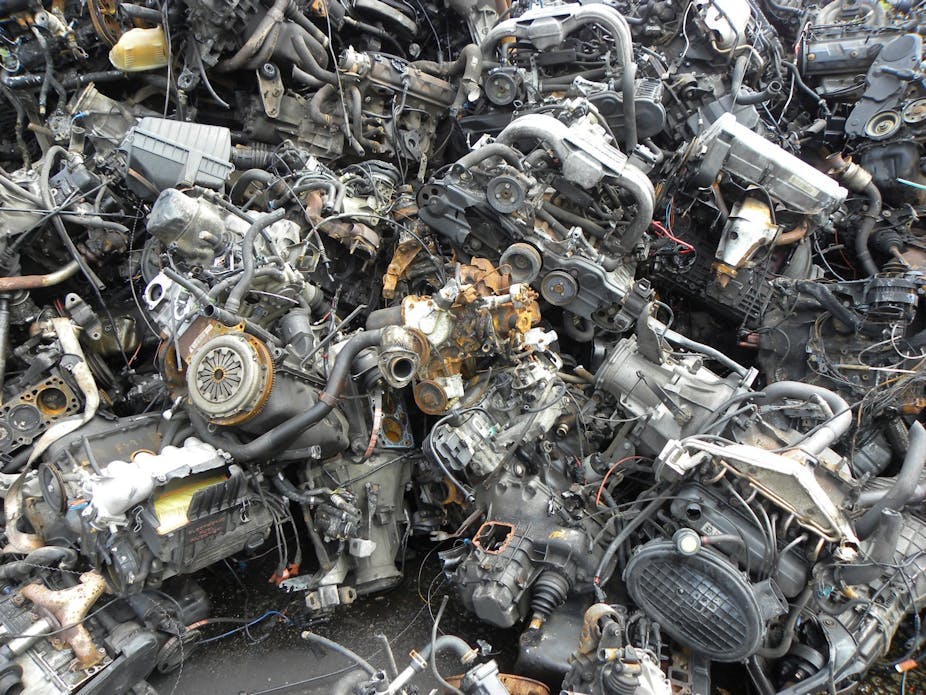Like many countries, Australia is seeing a growth in the number of diesel vehicles on our roads. Since 2006 the number of registered diesel vehicles has increased by a remarkable 40%; diesel passenger vehicle numbers have more than doubled. Almost 15% of all vehicles registered in Australia are powered by a diesel engine. What is driving this change and will it continue?
Because of their higher compression ratios, diesel engines provide superior fuel efficiency to their petrol alternatives. The development of common-rail intercooled turbo charged diesel engines saw this gap widen. Petrol engine manufacturers responded by greatly improving engine control systems, and through developments such direct fuel injection. As well as these, greater use of turbo-charging has seen the fuel consumption gap shorten. Further pressure is being added by the development of low consumption petrol-electric hybrid engines.
Lower fuel consumption should result in lower exhaust emissions, right? Well, yes and no. Diesel fuel is a heavier crude oil fraction than diesel so it contains more carbon than petrol. More carbon means more production of the greenhouse gas carbon dioxide (CO₂), but this increase is mitigated by lower fuel consumption.
Many countries assign taxes to vehicles on the basis of the amount of CO₂ produced per kilometre driven; we are yet to do this in Australia. Traditionally, diesel vehicles have had the lowest CO₂ emissions and this combined with once lower fuel costs accounted for the higher proportion of these vehicles seen in many countries.
But there is more than just carbon dioxide leaving the exhaust. Diesel vehicles are renowned for the black smoke they produce. The particulate matter (PM) that makes up this smoke constitutes a minute fraction of the fuel burned, but its reduction remains one of the major challenges facing these engines.
Developers have responded to this by improving fuel injection systems and exhaust treatment devices, while fuel makers have responded by improving the composition of the fuel. The improvements seen are best demonstrated by the tightening that has occurred over than last 10 years in the allowable PM emission limits which have reduced by a factor of around 30 for passenger cars, and around 50 for larger vehicles.
Much of the PM reduction has come about from the lowering of fuel sulphur content from a staggering 5000 ppm in the late 1990’s to now less than 10 ppm. This reduction has also enabled use of high-temperature exhaust treatment devices which burn off much of the PM remaining. But herein lies a problem; for these filters to work they must be hot. Short trips typically made-up of school runs and local shopping are not good for these systems. Without the benefit of the high temperature that results from a longer trip, higher emissions result, and even the possibility of filter failure.

For the buyer, assessing the benefits of emissions is made easier by the Green Vehicle Guide which separately weights fuel consumption and exhaust emissions to give an overall vehicle rating. Despite their better fuel consumption, diesel vehicles generally rank lower than petrol equivalents.
So, if the reason is not their better emissions performance, are buyers swayed by lower fuel costs? As many new owners of diesel vehicles have discovered, diesel fuel in Australia is now almost always more expensive than petrol.
Fuel prices are set by a complex set of mechanisms. Contributing factors are international bench mark prices, taxes, and margins. Internationally, growth in diesel consumption continues to outstrip petrol and - driven by this demand - diesel’s benchmark prices have been higher than petrol’s for some time.
Coupled to higher international prices is lack of local discounting. Australia’s mining, agriculture and freight sectors account for the vast majority of our diesel consumption, whereas for petrol almost all is used by the passenger vehicle fleet. This difference gives rise to the familiar weekly petrol fuel price cycle, and the almost static price for diesel. Suppliers reduce their margins giving rise to discounts to petrol price at the pump, whereas variation in diesel pump price is mostly as result of international price movements.
Not only is diesel fuel generally more expensive, vehicle cost is also higher, and anecdotally, they require greater servicing than their petrol equivalents. Except in specialist SUV categories, petrol vehicles dominate annual motoring club running cost surveys. Operating a diesel vehicle is likely only to be cheaper than a petrol equivalent if the owner driver has large annual mileage.
One benefit of diesel engines is their low-speed pulling power. Unlike petrol engines, diesel engines are able to haul heavy loads at low speed, hence their dominance in haulage and industry, more generally, where torque rather than power is needed. This attribute is often claimed by drivers to give more driving pleasure, or claimed to be an essential attribute of a “real” SUV.
It is possible that diesel is the new chic in Australia, however, the reality of owning and operating a diesel vehicle might see their growth stall, particularly as petrol engines continue to improve. One thing we can be sure about is that without them, Australia’s economy, like the rest of the world’s, would cease to operate.

